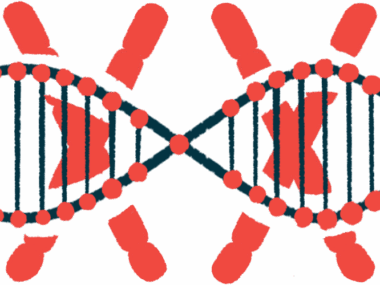FMR1 Gene Renamed to Increase Accuracy and Remove Stigmatizing Language
Written by |

In an effort to both increase accuracy and remove offensive language in the name of FMR1 — the gene at the root of fragile X syndrome — the European Fragile X Network (EFXN) led a push to rename it Fragile X Messenger Ribonucleoprotein 1.
The name change now has been confirmed by the HUGO (Human Gene Organisation) Gene Nomenclature Committee, an international group that tracks formal gene names.
An article published this year in the journal Cells had advocated for this change in fragile X-related terminology.
“As the mother of a son and daughter who both have the full mutation for Fragile X but who are affected very differently, I am grateful to the EFXN for their work to create a positive, more accurate definition of the fragile X gene,” Katie Clapp, president and co-founder of the FRAXA Research Foundation, said in a press release.
The FMR1 gene was discovered in 1991, when researchers determined that mutations in this gene cause fragile X syndrome. At the time, the gene was named “Fragile X Mental Retardation-1.”
In the decades since, with growing awareness of the negative effects that stigmatizing language can have on people, this name — and its impact on people affected by fragile X — has been re-evaluated.
“In casual conversation, retardation, retarded, or retard are pejorative words which carry a disrespectful weight and confer a sense of contempt towards the person being described,” Emma Mather-Pike, research information manager at the Fragile X Society, in the U.K., wrote in a post.
“Receiving a diagnosis for a condition which shapes the quality and course of a person’s life is a significant and unforgettable moment. … For this life-changing experience to be distorted with an outdated and derogatory label such as ‘mental retardation’ is a tragedy,” Mather-Pike wrote. “It comes as no surprise that people with [fragile X syndrome or fragile X premutation associated conditions] and their families find it highly upsetting when this term surfaces in medical conversations and clinical consultations.”
Beyond the associated stigma, the prior name of FMR1 wasn’t especially descriptive or accurate with regard to the gene’s function. While fragile X often causes cognitive challenges, the disease’s manifestations vary widely from person to person. Plus, many females who carry a full mutation in the FMR1 gene don’t have any unusual cognitive or behavioral difficulties whatsoever.
The new name more accurately reflects the gene’s function: FRM1 provides instructions for a protein that helps to shuttle messenger RNA — a temporary copy of the genetic code — out of a cell’s nucleus and to the ribosomes, which are the cellular structures responsible for assembling proteins.
“All of us working in the fragile X field are so glad to see this gene renamed so that we can get away from the negative connotations of ‘mental retardation’ in the gene name and have a more appropriate gene name that is descriptive of its function,” said Elizabeth Berry-Kravis, MD, PhD, from Rush University.
In the Cells article, the authors had written that changing the terminology would “make the world of difference” to how fragile X patients are “viewed, treated, and accepted in wider society.”
“Without the attachment of the term ‘retardation,’ FXS and [related disorders] can be seen as chromosomal conditions in and of themselves, affecting different people in different ways, and indeed the same person across their lifespan in different ways,” the authors had written.






